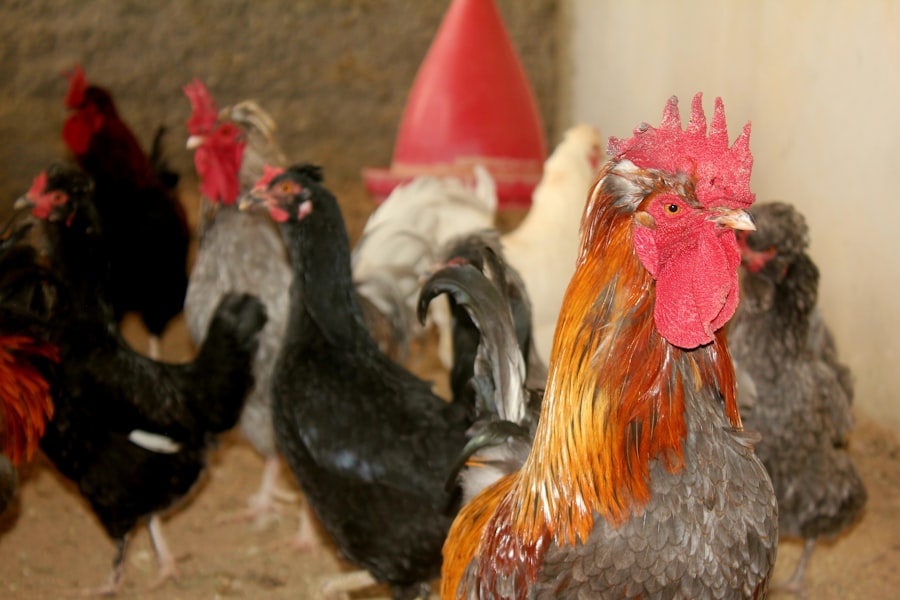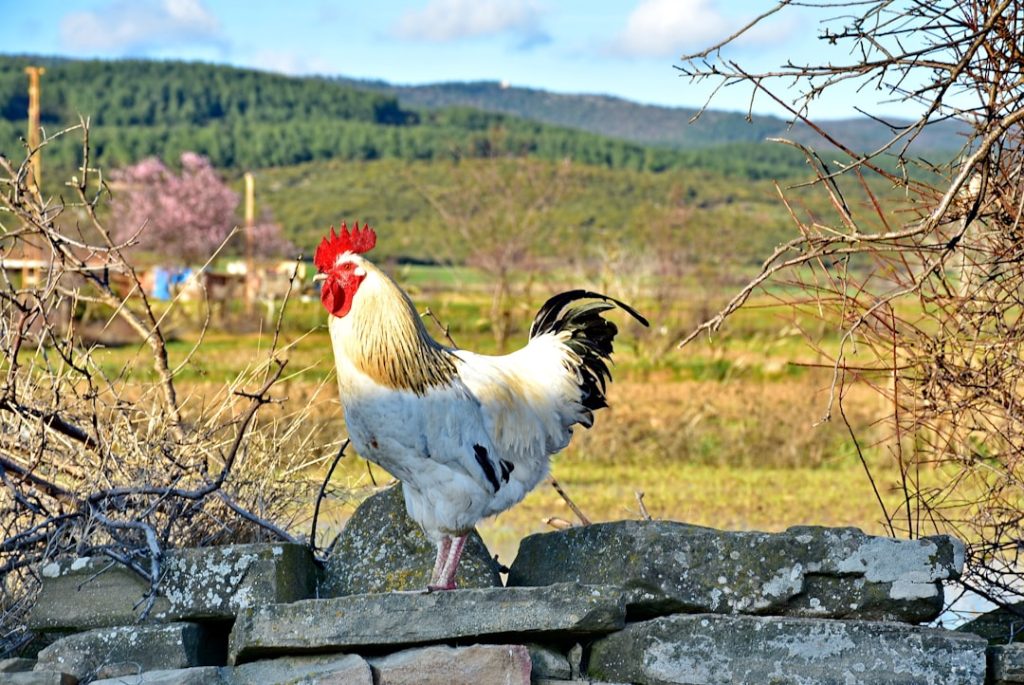Coturnix quail breeding has become increasingly popular among homesteaders and small-scale farmers due to the quail’s small size, low maintenance, and high egg production. These birds are known for their fast growth and early maturity, making them an attractive option for those looking to raise their own meat and eggs. When it comes to breeding Coturnix quail, one of the key considerations is the role of roosters in the process. Roosters play a crucial role in the breeding of Coturnix quail, as they are responsible for fertilizing the eggs laid by the hens. Understanding the importance of roosters and how to manage them in a breeding operation is essential for success in Coturnix quail breeding.
Table of Contents
- 1 The Importance of Roosters in Coturnix Quail Breeding
- 2 Ideal Rooster to Hen Ratio for Coturnix Quail Breeding
- 3 Factors to Consider When Determining the Number of Roosters
- 4 Managing Roosters in a Coturnix Quail Breeding Operation
- 5 Potential Challenges of Having Too Many Roosters
- 6 Finding the Right Balance of Roosters in Coturnix Quail Breeding
- 7 FAQs
- 7.1 How many roosters should I have when breeding coturnix quail?
- 7.2 What is the role of a rooster in coturnix quail breeding?
- 7.3 Can I have more than one rooster when breeding coturnix quail?
- 7.4 What are the signs of aggression among roosters in a coturnix quail breeding setup?
- 7.5 How can I introduce a new rooster to an existing coturnix quail breeding flock?
Key Takeaways
- Coturnix quail breeding is a popular practice for small-scale poultry enthusiasts due to their small size and high egg production.
- Roosters play a crucial role in coturnix quail breeding by fertilizing the eggs laid by the hens.
- The ideal rooster to hen ratio for coturnix quail breeding is 1:5 to 1:7 to ensure successful fertilization without causing stress to the hens.
- Factors to consider when determining the number of roosters include the size of the breeding operation, the age and health of the roosters, and the breeding goals.
- Managing roosters in a coturnix quail breeding operation involves providing adequate space, monitoring behavior, and ensuring proper nutrition to maintain fertility and minimize aggression.
The Importance of Roosters in Coturnix Quail Breeding
Roosters are essential for successful Coturnix quail breeding, as they are responsible for fertilizing the eggs laid by the hens. Without roosters, the eggs laid by the hens will not be fertile and therefore will not hatch. This makes the presence of roosters crucial for ensuring a steady supply of fertile eggs for hatching and production. Additionally, roosters play a role in maintaining order within the flock, as they establish a pecking order and protect the hens from potential threats. Their presence can also help to reduce stress and aggression among the hens, leading to a more harmonious and productive breeding environment. Overall, roosters are an integral part of a successful Coturnix quail breeding operation, and their presence is necessary for ensuring a healthy and productive flock.
Ideal Rooster to Hen Ratio for Coturnix Quail Breeding
When it comes to determining the ideal rooster to hen ratio for Coturnix quail breeding, there are a few factors to consider. In general, a ratio of one rooster to every four to six hens is recommended for optimal fertility and successful breeding. This ratio allows for adequate fertilization of the eggs without causing excessive stress or aggression among the hens. However, it’s important to note that the ideal ratio may vary depending on the specific conditions of the breeding operation, such as the size of the breeding pens, the temperament of the roosters, and the overall dynamics of the flock. It’s essential to observe the behavior of the birds and make adjustments to the ratio as needed to ensure a healthy and productive breeding environment.
Factors to Consider When Determining the Number of Roosters
When determining the number of roosters to keep in a Coturnix quail breeding operation, there are several factors to consider. The size of the breeding pens and the overall space available will play a significant role in determining how many roosters can be accommodated. Overcrowding can lead to stress, aggression, and reduced fertility, so it’s important to ensure that there is enough space for the roosters to establish their territories and maintain order within the flock. Additionally, the temperament of the roosters should be taken into account, as aggressive or overly dominant roosters can disrupt the breeding environment and cause harm to the hens. It’s also important to consider the age and health of the roosters, as older or sickly birds may not be as effective in fertilizing eggs. By taking these factors into consideration, breeders can determine the appropriate number of roosters to maintain in their Coturnix quail breeding operation.
Managing Roosters in a Coturnix Quail Breeding Operation
Managing roosters in a Coturnix quail breeding operation involves creating a balanced and harmonious environment that promotes successful breeding and overall flock health. Providing adequate space for the roosters to establish their territories and maintain order within the flock is essential for managing their behavior and reducing stress and aggression. Additionally, ensuring that the roosters have access to a balanced diet, clean water, and proper shelter will help to maintain their overall health and fertility. Regular observation of the birds’ behavior and interactions can also help breeders identify any potential issues and make adjustments as needed to maintain a healthy and productive breeding environment.
Potential Challenges of Having Too Many Roosters

Having too many roosters in a Coturnix quail breeding operation can lead to a variety of challenges that can impact overall flock health and productivity. Overcrowding can lead to increased stress and aggression among the roosters, which can negatively impact fertility and egg production. Additionally, having too many roosters can lead to excessive mating behavior, which can cause physical harm to the hens and lead to reduced egg production. It can also create an imbalance in the pecking order, leading to increased fighting and disruption within the flock. By carefully managing the number of roosters in a breeding operation and ensuring that there is a balanced ratio of roosters to hens, breeders can avoid these potential challenges and maintain a healthy and productive Coturnix quail breeding environment.
Finding the Right Balance of Roosters in Coturnix Quail Breeding
In conclusion, roosters play a crucial role in Coturnix quail breeding, as they are responsible for fertilizing the eggs laid by the hens. Understanding the ideal rooster to hen ratio, as well as the factors to consider when determining the number of roosters, is essential for maintaining a healthy and productive breeding environment. By managing roosters effectively and avoiding potential challenges associated with having too many roosters, breeders can ensure successful breeding and overall flock health. Finding the right balance of roosters in a Coturnix quail breeding operation is key to achieving optimal fertility, egg production, and overall success in raising these versatile birds.
If you’re interested in coturnix quail breeding, you might also want to check out this informative article on how to create a garden chicken coop. It provides valuable insights into creating a suitable environment for your poultry, which can be beneficial for quail breeding as well.
FAQs
How many roosters should I have when breeding coturnix quail?
It is recommended to have one rooster for every 4-5 hens when breeding coturnix quail. This ratio helps to prevent overbreeding and aggression among the roosters.
What is the role of a rooster in coturnix quail breeding?
The rooster’s primary role in coturnix quail breeding is to fertilize the eggs laid by the hens. Roosters also help to protect the hens and establish a pecking order within the flock.
Can I have more than one rooster when breeding coturnix quail?
While it is possible to have more than one rooster when breeding coturnix quail, it is important to maintain a proper ratio of roosters to hens to prevent aggression and overbreeding. It is generally recommended to have one rooster for every 4-5 hens.
What are the signs of aggression among roosters in a coturnix quail breeding setup?
Signs of aggression among roosters in a coturnix quail breeding setup may include excessive pecking, chasing, and fighting. It is important to monitor the behavior of the roosters and separate them if aggression becomes a problem.
How can I introduce a new rooster to an existing coturnix quail breeding flock?
When introducing a new rooster to an existing coturnix quail breeding flock, it is important to do so gradually and in a controlled manner. Providing separate housing for the new rooster and allowing the birds to become familiar with each other through a wire barrier can help to minimize aggression and establish a pecking order.
Meet Walter, the feathered-friend fanatic of Florida! Nestled in the sunshine state, Walter struts through life with his feathered companions, clucking his way to happiness. With a coop that’s fancier than a five-star hotel, he’s the Don Juan of the chicken world. When he’s not teaching his hens to do the cha-cha, you’ll find him in a heated debate with his prized rooster, Sir Clucks-a-Lot. Walter’s poultry passion is no yolk; he’s the sunny-side-up guy you never knew you needed in your flock of friends!







